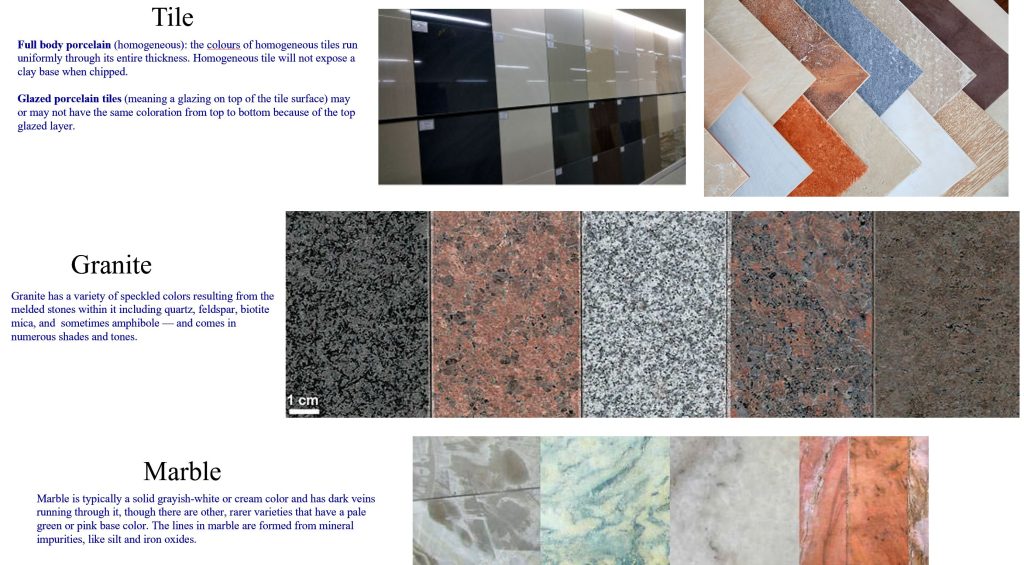Case 3
- Introduction
- Causes of Defects
- Good Practices
- Standards
- Maintenance and Diagnostics
- Remedial
- Similar Cases
- References
Cause of Defects
The porosity of natural stones (e.g. marble & granite) may vary even if they come from the same quarry.


The presence of relatively high micro porosity on the top surface along natural veins of the marble may cause the staining with salts. These salt could have originated from commercial chemicals such as cleaning agents and pollutants. Upon drying, these salts crystallize and expand resulting in pitting.
Natural stones often have porous properties, making them absorbent to varying degrees based on pore characteristics and the level of polish they receive. Stains can be categorized into organic and inorganic types. Organic stains stem from sources like food, drinks, plants, and dyes. Inorganic stains are mineral-based; for instance, iron compounds in stones can oxidize, resulting in a yellowish-brown hue, especially in white marble, granite, and certain limestone. Other factors leading to discoloration include liquid penetration from above, moisture seepage from minerals within the stone, contamination from the mortar bed, moisture from grouting compounds affecting stone edges, efflorescence caused by calcium hydroxide reacting to form calcium carbonate etc.
Types of stains [1] include:
- oilbased (grease, tar, cooking oil, milk, cosmetics)
- organic (coffee, tea, fruit, tobacco, paper, food, urine, leaves, bark, bird droppings)
- biological (algae, mildew, lichens, moss, fungi)
- metal (iron, rust, copper, bronze)
- ink (magic marker, pen, ink)
- paint
- water stains (surface accumulation of hard water)
- etch marks
- efflorescence
- fire and smoke damage